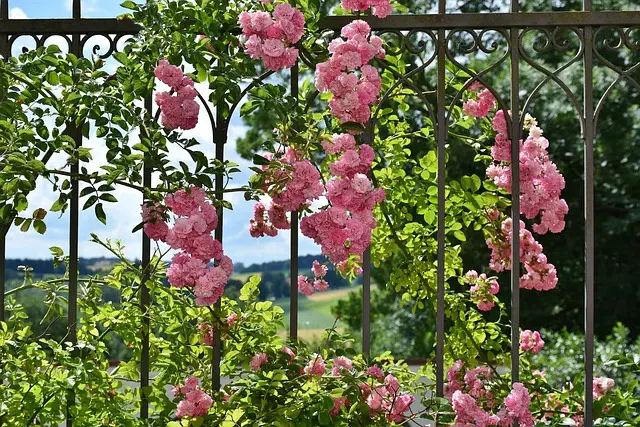Kava tea, from the Piper kava plant (often confused with kratom), is a natural stress reliever due to its active compounds, kavalactones, which interact with brain GABA receptors. Growing kratom at home offers access to pure kava root, providing an alternative to pharmaceutical anxiety relief with minimal side effects. With specific environmental requirements, cultivating kava plants enables individuals to reap the benefits of this ancient Pacific Island remedy, promoting relaxation without drowsiness or addiction potential.
Kava tea, an herbal drink with a rich history, is making waves as a natural remedy for stress and anxiety. Derived from the roots of the kava plant (Parthenopsis furcaria), this ancient beverage has gained popularity for its soothing effects. Beyond its relaxing properties, kava tea offers a unique advantage over traditional anxiety relief methods, providing a gentle and all-natural approach to managing stress. This comprehensive guide explores the science behind kava’s benefits, its practical applications, and even delves into the art of growing your own kratom (kava) at home.
- What is Kava Tea? An Overview of the Herbal Drink
- The Science Behind Kava's Relaxing and Anxiety-Relieving Properties
- How Kava Tea Can Help Manage Stress and Anxiety
- Benefits of Kava Over Other Anxiety Relief Methods
- Grow Your Own Kratom: A Comprehensive Guide for Beginners
What is Kava Tea? An Overview of the Herbal Drink

Kava tea, derived from the root of the Kava plant (also known as Piper kava), is an herbal beverage renowned for its calming and stress-relieving properties. Native to the Pacific islands, it has gained popularity worldwide as a natural alternative for promoting relaxation and managing anxiety. This traditional drink has been used for centuries in Polynesian cultures, where it holds cultural significance and is often shared during social gatherings.
The key active compounds in kava tea are kavalactones, which have been studied for their potential to interact with GABA (gamma-aminobutyric acid) receptors in the brain, leading to a sense of calm and reduced anxiety. Unlike many synthetic medications, kava offers a gentle yet effective approach to relaxation without causing drowsiness or impairing cognitive function. Growing and cultivating kava plants, often referred to as ‘grow kratom’ (a related but distinct species), requires specific environmental conditions, highlighting the care and expertise needed to produce this valuable herbal remedy.
The Science Behind Kava's Relaxing and Anxiety-Relieving Properties

Kava tea, derived from the root of the Kava plant (Piper kala), has been a staple in Pacific Island cultures for centuries due to its relaxing and anxiety-relieving effects. The science behind these properties involves several key compounds found in the plant, most notably kavalactones. Research suggests that kavalactones interact with certain receptors in the brain, including GABA (gamma-aminobutyric acid) receptors, which are known to promote relaxation and reduce anxiety.
The growing popularity of kratom, another member of the Piper genus, has also brought attention to these herbal remedies. While kratom is often cultivated and used for its stimulant and opioid-like effects, it shares some chemical compounds with kava tea. Understanding the science behind kava’s properties can provide insights into why it has been a trusted natural remedy for centuries, offering an alternative option for those seeking relaxation and anxiety relief without relying on pharmaceutical interventions.
How Kava Tea Can Help Manage Stress and Anxiety

Kava tea, derived from the root of the Kava plant (also known as Piper kava), has been used for centuries in the Pacific Islands as a natural remedy for stress and anxiety. Its calming effects are attributed to several key compounds, including kavalactones, which have been studied for their potential to reduce tension and promote relaxation. These compounds interact with neurotransmitters in the brain, such as GABA (gamma-aminobutyric acid), known for its soothing properties. Regular consumption of kava tea can help manage chronic stress by reducing cortisol levels, the hormone often referred to as the ‘stress hormone’.
Moreover, kava tea offers a gentle yet effective alternative to prescription medications for anxiety disorders. Unlike many synthetic drugs, kava has minimal side effects and is generally safe for most adults when consumed in moderation. Growing kratom (a synonym for kava) at home or purchasing from reputable sources ensures access to high-quality, pure kava root, allowing individuals to enjoy the benefits of this herbal remedy without the potential risks associated with contaminated or processed products.
Benefits of Kava Over Other Anxiety Relief Methods

Kava tea, derived from the roots of the Kava plant, offers a natural alternative to conventional anxiety relief methods. Unlike synthetic medications that can come with side effects and dependence, kava has been used for centuries in traditional Pacific Island cultures for its calming properties. One of its key advantages is its ability to promote relaxation without drowsiness, making it an ideal choice for those seeking a more gentle approach to managing stress and anxiety.
In comparison to other herbal remedies, kavalactones, the active compounds in kava, have been extensively studied for their anxiolytic effects. Research suggests that these compounds interact with gamma-aminobutyric acid (GABA) receptors in the brain, similar to certain anti-anxiety drugs but without the potential for abuse or addiction. This natural mechanism of action makes kava an attractive option for individuals looking to grow kratom plants and cultivate their own herbal remedies, promoting a sense of control over their well-being.
Grow Your Own Kratom: A Comprehensive Guide for Beginners

Growing your own kratom at home is an accessible and rewarding way for beginners to explore this herbal remedy. Kratom, scientifically known as Mitragyna speciosa, thrives in tropical conditions, making it a bit of a challenge to cultivate indoors. However, with the right setup and care, you can successfully grow your own supply. Start by selecting the appropriate kratom strain, often categorized by their effects: Maeng Da, Thai, or Bali, each offering unique benefits for relaxation and anxiety relief.
Prepare a well-draining potting mix in a container with ample space for root development. Maintain a warm environment, typically around 70-85°F (21-29°C), and ensure your plant receives bright, indirect light. Regularly water your kratom, allowing the soil to dry slightly between waterings. Patience is key; it may take several months for your kratom plant to mature enough to harvest and process into tea. Growers often dry and grind the leaves to make a fine powder, perfect for brewing a relaxing cup of kratom tea.
Kava tea, with its rich history as an herbal remedy, offers a natural and effective way to manage stress and anxiety. The science behind its relaxing properties is compelling, making it a worthy alternative to conventional anxiety relief methods. Moreover, the ability to grow your own kratom (kava) through our comprehensive guide empowers individuals to take control of their well-being. By embracing this ancient practice and incorporating it into modern routines, folks can experience the calming effects of kava tea, fostering relaxation and enhancing overall mental health.






